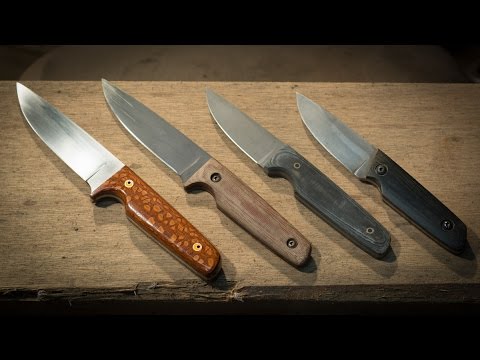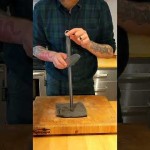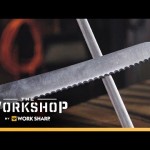
de3eca57cc3cad9ff75b998645f23a57
Knives are essential tools for a variety of tasks, from preparing food to cutting rope. The performance of a knife is largely determined by its grind, which is the shape of the blade’s edge. Different grinds are better suited for different tasks, so it is important to understand the different types of grinds and how they affect the performance of a knife. In this article, we will explore the different types of knife grinds and how they can be used to achieve optimal performance.
What is the most versatile knife grind
Knife grinds are the various shapes and angles that are ground into the blade of a knife. Different grinds are used for different purposes, and the most versatile grind is the one that can be used for a variety of tasks. The most versatile knife grind is the full flat grind, which is a single bevel that runs from the spine of the blade to the edge. This grind is great for slicing, chopping, and piercing, and it is also easy to sharpen.
The hollow grind is another popular grind that is often used for hunting and skinning knives. This grind is created by grinding the blade in a concave shape, which creates a very sharp edge. The hollow grind is great for slicing and skinning, but it is not as durable as the full flat grind.
The convex grind is a grind that is created by grinding the blade in a convex shape. This grind is great for chopping and slicing, and it is also very durable. The convex grind is not as sharp as the hollow grind, but it is still a great choice for a versatile knife.
The scandi grind is a grind that is created by grinding the blade in a flat shape with a slight curve. This grind is great for slicing and chopping, and it is also very easy to sharpen. The scandi grind is not as durable as the full flat grind, but it is still a great choice for a versatile knife.
No matter what type of knife you are looking for, there is a grind that will suit your needs. The full flat grind is the most versatile grind, but the hollow grind, convex grind, and scandi grind are all great choices for a versatile knife. Each grind has its own advantages and disadvantages, so it is important to choose the one that best suits your needs.
What are the different grinds on knife blades
Knives come in all shapes and sizes, and the grind of the blade is an important factor in determining the knife’s performance. A grind is the shape of the blade’s cross-section, and it affects the knife’s sharpness, strength, and durability. There are several different grinds, each with its own advantages and disadvantages.
Flat Grind
The flat grind is the most common grind for kitchen knives. It is created by grinding both sides of the blade in a straight line from the spine to the edge. This grind is relatively easy to sharpen and provides a good balance between strength and sharpness. It is also the most versatile grind, as it can be used for a variety of tasks.
Hollow Grind
The hollow grind is created by grinding the blade in a concave shape from the spine to the edge. This grind is very sharp, but it is also very weak and prone to chipping. It is best used for slicing and cutting tasks, as it is not suitable for heavy-duty tasks.
Chisel Grind
The chisel grind is created by grinding one side of the blade in a straight line from the spine to the edge, while the other side is left unground. This grind is very sharp, but it is also very weak and prone to chipping. It is best used for slicing and cutting tasks, as it is not suitable for heavy-duty tasks.
Convex Grind
The convex grind is created by grinding the blade in a convex shape from the spine to the edge. This grind is very strong and durable, but it is also difficult to sharpen. It is best used for heavy-duty tasks, such as chopping and splitting.
Scandi Grind
The Scandi grind is a variation of the flat grind. It is created by grinding the blade in a straight line from the spine to the edge, but with a slight convex curve near the edge. This grind is very sharp and easy to sharpen, but it is not as strong as other grinds. It is best used for slicing and cutting tasks.
Conclusion
The grind of a knife blade is an important factor in determining its performance. There are several different grinds, each with its own advantages and disadvantages. It is important to choose the right grind for the task at hand, as the wrong grind can lead to poor performance and even damage to the blade.
What is the best grind for a blade
When it comes to blades, the grind is an important factor to consider. The grind is the shape of the blade, and it affects the performance of the blade in different ways. Different grinds are better suited for different tasks, so it is important to choose the right grind for the job.
Flat Grind is the most common grind for blades. It is a simple grind that is easy to sharpen and maintain. It is a good all-purpose grind that is suitable for most tasks. It is also the most economical grind.
Hollow Grind is a concave grind that is very sharp. It is great for slicing and cutting, but it is not as durable as other grinds. It is also more difficult to sharpen and maintain.
Chisel Grind is a grind that is only on one side of the blade. It is great for chopping and splitting, but it is not suitable for slicing or cutting. It is also difficult to sharpen and maintain.
Convex Grind is a grind that is curved outward. It is very strong and durable, and it is great for chopping and splitting. It is also easy to sharpen and maintain.
The best grind for a blade depends on the task it will be used for. Flat grind is a good all-purpose grind, while hollow grind is great for slicing and cutting. Chisel grind is great for chopping and splitting, and convex grind is strong and durable. It is important to choose the right grind for the job to ensure the best performance.
What is the best grind for a survival knife
When it comes to choosing the right grind for a survival knife, there are a few factors to consider. The grind of a knife is the shape of the blade, which affects its performance and durability. The most common grinds are flat, hollow, and convex. Each grind has its own advantages and disadvantages, so it’s important to choose the one that best suits your needs.
A flat grind is the most common grind for survival knives. It is easy to sharpen and provides a good balance between strength and cutting ability. The downside is that it can be prone to chipping and can be difficult to sharpen in the field.
A hollow grind is a good choice for a survival knife because it is very sharp and easy to sharpen. It is also lightweight and has good slicing ability. The downside is that it is not as strong as other grinds and can be prone to chipping.
A convex grind is the strongest of the three grinds and is the most durable. It is also the most difficult to sharpen, but it is very strong and can handle tough tasks. The downside is that it is not as sharp as other grinds and can be difficult to sharpen in the field.
When choosing the best grind for a survival knife, it is important to consider the type of tasks you will be using it for. If you are looking for a knife that is strong and durable, then a convex grind is the best choice. If you are looking for a knife that is sharp and easy to sharpen, then a hollow grind is the best choice. If you are looking for a knife that is easy to sharpen and provides a good balance between strength and cutting ability, then a flat grind is the best choice.
No matter which grind you choose, it is important to maintain your knife properly. This includes sharpening it regularly and keeping it clean and oiled. With proper care, your survival knife will last for many years.
Thank you for joining us on this journey of exploring different knife grinds for optimal performance. We hope that you have gained a better understanding of the different types of grinds and how they can affect the performance of your knife. Until next time, goodbye!















